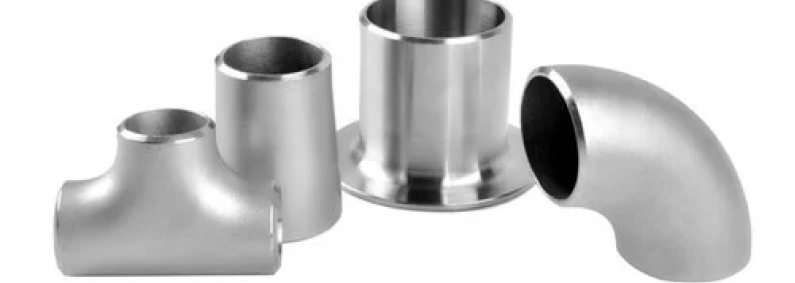Hastelloy Pipe Fittings

Hastelloy Pipe Fittings are high-performance components made from Hastelloy, a nickel-based superalloy that combines outstanding corrosion resistance with excellent strength and durability. These fittings are designed to be used in harsh environments, where resistance to both high temperatures and aggressive chemicals is essential. Hastelloy pipe fittings are critical in industries such as chemical processing, aerospace, power generation, and marine, where maintaining the integrity of fluid and gas systems is paramount.
Key Properties of Hastelloy Pipe Fittings
- Exceptional Corrosion Resistance: Hastelloy pipe fittings are designed to withstand corrosive environments, including exposure to harsh chemicals, acids, and salts. Their resistance to chloride-induced stress corrosion cracking, sulfuric acid, hydrochloric acid, and other aggressive agents makes them ideal for chemical and marine applications.
- High-Temperature Strength: Hastelloy pipe fittings can endure extremely high temperatures without losing their structural integrity. This makes them highly suitable for use in high-pressure, high-temperature applications like in aerospace, chemical reactors, and power plants.
- Durability: These fittings have an impressive lifespan due to their robust material properties. They resist pitting, crevice corrosion, and oxidation, ensuring reliability and long-term performance in demanding environments.
- Excellent Weldability: Hastelloy pipe fittings can be welded using common welding methods, such as TIG and MIG, ensuring that they can be easily incorporated into new and existing piping systems.
- Non-Magnetic: Hastelloy is a non-magnetic alloy, making it ideal for applications where magnetic interference could be a concern.
Applications of Hastelloy Pipe Fittings
Hastelloy pipe fittings are widely used across industries where harsh environmental conditions demand high-strength and corrosion-resistant materials. Common applications include:
- Chemical Processing: Used for piping systems that transport corrosive fluids and gases, including acid reactors, separators, and pressure vessels.
- Power Generation: Applied in power plants, especially in boiler tubes, heat exchangers, and other systems exposed to high temperatures and corrosive conditions.
- Aerospace: Utilized in systems requiring resistance to both high temperatures and corrosive fuels or oxidizing agents.
- Marine and Offshore: Hastelloy’s resistance to seawater corrosion makes it ideal for marine piping systems, desalination plants, and offshore oil rigs.
- Pharmaceutical and Food Processing: Often used in applications where hygiene and corrosion resistance are crucial, such as in pharmaceutical manufacturing systems and food processing pipelines.
- Nuclear and High-Pressure Systems: Hastelloy fittings are frequently used in the nuclear industry and other high-pressure environments due to their strength, high temperature, and radiation resistance.
Advantages of Hastelloy Pipe Fittings
- Corrosion Resistance: Hastelloy’s resistance to a broad range of aggressive chemicals makes it a go-to material for industries dealing with corrosive substances.
- Heat Resistance: The alloy’s ability to withstand high temperatures makes it essential for systems exposed to heat, pressure, and thermal cycling.
- Long Service Life: With resistance to erosion, oxidation, and chemical wear, Hastelloy pipe fittings are durable, providing longer life compared to other materials.
- Versatility: These fittings can be used across various industries, offering excellent versatility in applications ranging from chemical manufacturing to aerospace.
- Reliability: Hastelloy ensures the integrity of fluid and gas systems even in the most demanding environments, reducing the likelihood of system failure and maintenance costs.
Types of Hastelloy Pipe Fittings
- Elbows: Used to change the direction of the flow in piping systems. Available in various angles (45°, 90°, 180°) to suit specific system requirements.
- Tees: Used to branch off a pipeline, allowing fluid or gas to flow in a new direction.
- Reducers: Employed to connect pipes of different sizes, ensuring a smooth transition and proper flow control.
- Couplings: Used to join two pipe ends together, providing a reliable connection.
- Flanges: Hastelloy flanges are used to connect pipes to valves, pumps, or other equipment. These fittings are designed to provide secure and leak-free connections.
- Caps and Plugs: Used to close the ends of pipes, protecting the piping system from debris and contaminants.
- Bushings: Installed inside pipe fittings to accommodate different pipe sizes, allowing for a secure connection.
Grades of Hastelloy Pipe Fittings
- Hastelloy C-276 (UNS N10276): Known for its excellent resistance to hydrochloric acid, sulfuric acid, and other corrosive agents. This grade is commonly used in the chemical and pharmaceutical industries.
- Hastelloy C-22 (UNS N06022): Offers superior resistance to both oxidizing and reducing environments, making it ideal for applications that face extreme corrosion challenges.
- Hastelloy B-3 (UNS N10675): Excellent resistance to hydrochloric acid and other reducing acids, making it suitable for chemical processing applications.
- Hastelloy X (UNS N06002): A high-temperature resistant grade commonly used in aerospace applications due to its strength and resistance to oxidation at elevated temperatures.
FAQs
Hastelloy is highly resistant to corrosive chemicals and acids, making it ideal for use in reactors, pipes, and fittings exposed to aggressive fluids in chemical processing environments.
Yes, Hastelloy pipe fittings can be welded using standard welding techniques, such as TIG and MIG welding, making them versatile for a variety of piping systems.
Hastelloy remains strong and resistant to oxidation at high temperatures, making it ideal for applications in high-pressure, high-temperature environments like power plants and aerospace.

Products
Industry We Serve
- Oil & Gas industries
- Chemical process industries
- Pump and valve in high pressure component
- Food industries
- Pulp and paper industry
- Aerospace industry
- Power plant
- Mechanical component
- Sugar industry
- Cement industry
